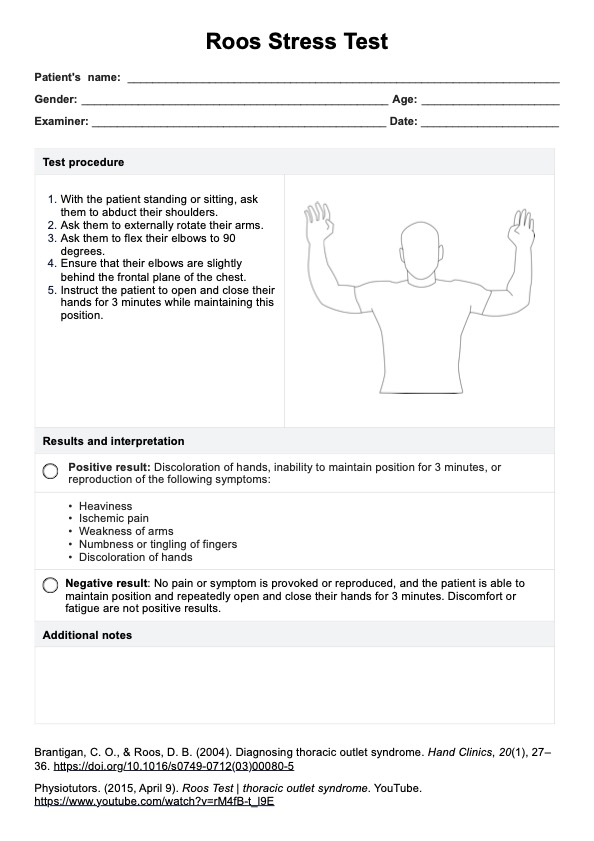The Roos test, also known as the Elevated Arm Stress Test, is a physical examination used to assess for thoracic outlet syndrome. It involves having the patient repeatedly open and close their hands while holding their arms in an elevated, externally rotated position for three minutes.

Roos Stress Test
Learn more about the Roos Stress Test, one of the most sensitive provocative tests for thoracic outlet syndrome. Use our template today.
Roos Stress Test Template
Commonly asked questions
A positive Roos maneuver occurs when the patient experiences symptoms like pain, numbness, tingling, or weakness in the arms, hands, or fingers, indicating possible thoracic outlet syndrome.
With thoracic outlet syndrome, it is advisable to avoid activities that involve repetitive overhead motions, heavy lifting, or sustained postures that exacerbate nerve or blood vessel compression in the shoulder area. Proper ergonomics and avoiding poor posture are also essential for symptom management.
EHR and practice management software
Get started for free
*No credit card required
Free
$0/usd
Unlimited clients
Telehealth
1GB of storage
Client portal text
Automated billing and online payments











